About Us
The Story of ITR®
With over 30 years of clinical experience helping individuals dealing with trauma and other mental health challenges, psychiatrist Dr. Louis Tinnin and art therapist Dr. Linda Gantt developed and tested the Instinctual Trauma Response approach in their practices.
In the 1990s, Dr. Tinnin conducted clinical studies to compare different methods of accessing traumatic material. He compared hypnosis, sodium amytal, and nitrous oxide. He discovered that the catharsis of reliving a trauma was not the curative element as he had predicted. He realized that the key to a person’s improvement was being able to finish the story. Those whose stories were told in an unemotional fashion did better than those whose stories were emotionally told but interrupted before the ending.
With this important finding, Dr. Tinnin and Dr. Gantt began working on specific protocols to keep a person from reliving painful experiences. They devised an image narrative approach (which they later called Graphic Narrative®). They soon found if they used the components of the Instinctual Trauma Response as an outline for each story, it enabled them to identify many of the fragments of a story that caused troubling symptoms. Once the stories were complete and then told back to a survivor (a process called a “re-presentation”), people often spontaneously commented that they felt the event was truly over. Along with this, symptoms were greatly reduced or completely disappeared.
They found the next step is Externalized Dialogue® helps a person to communicate and understand the dissociated Parts of them that hold “victim Mythology” (negative thoughts, beliefs, or behaviors) based on those now finished past experiences and they could reverse that in a short time with practice.
Drs. Tinnin and Gantt found many people are given a devastating diagnosis when in fact they are “stuck” in a fixed state of the ITR caused by a traumatic experience. They say, “It’s not who you are, it’s what happened to you, it’s totally treatable and it doesn’t take long to do it”.

LOUIS TINNIN M.D.
Psychiatrist and Co-Founder of ITR®
Bessel Van der Kolk described Dr. Tinnin as "the greatest trauma mind of the 20th century." Dr. Tinnin and Dr. Gantt have devoted their life work to developing how to help people eradicate trauma symptoms and live a happy, healthy life.
Louis Tinnin, M.D., and Linda Gantt, Ph.D., ATR-BC, two long-time researchers in trauma, developed their theories and treatment techniques based on cutting-edge brain research, animal survival instincts, years of clinical observations, and first-person accounts of trauma survivors treated using ITR. They have shown that recovery is possible by applying the simple tasks of Graphic Narrative™ and Externalized Dialogue™ to help the brain “reboot." ITR finishes the trauma stories, reverses dissociation, and eliminates "Victim Mythology."
Dr. Tinnin (1932-2014) had a successful 50-year career as a psychiatrist. He served tirelessly as the founder of two outpatient trauma clinics: Trauma Recovery Institute (1996-2006) and Intensive Trauma Therapy (2006-present).
He and his wife, Linda Gantt, developed Instinctual Trauma Response® from early clinical trials at Chestnut Ridge Hospital at West Virginia University (Morgantown, West Virginia) and the Louis A. Johnson Veterans Administration Medical Center (Clarksburg, West Virginia).
In the 1970s, Dr. Tinnin had a private practice in psychiatry in Laurel, Maryland. He was active in the politics of mental health and instrumental in getting the state of Maryland to pass a law requiring that general hospitals have psychiatric units at a time when even the most prestigious hospital in the state was little more than a warehouse for seriously disturbed psychiatric patients.
After moving to West Virginia in 1979, Dr. Tinnin served as the medical director of a community mental health center. In 1984, he joined the faculty of the Department of Behavioral Medicine and Psychiatry in the School of Medicine at West Virginia University, serving as associate professor and professor. He began learning more about post-traumatic stress disorder (PTSD), an area that interested few people at the time.
Some cases that Dr. Tinnin saw in medical school stayed with him his entire life. He questioned the received wisdom of older doctors who did not comprehend how invasive medical procedures without anesthesia for babies could be traumatic. These doctors assumed the child’s nervous system was too immature to feel pain and, even if the child did feel it, he or she would not remember it. His clinical observations impelled Dr. Tinnin to work out procedures for dealing with early memories that were nonverbal but resulted in long-lasting and disturbing symptoms.
In 1992, Dr. Tinnin developed a Fellowship in Psychotraumatology in conjunction with WVU and the VA Medical Center. It was then that he began doing research on how to process traumatic events without reliving them including those in infancy and childhood.
After retiring from WVU in 1996 with the rank of professor emeritus, Dr. Tinnin established his own clinics, the Trauma Recovery Institute (TRI) (1996-2006) and Intensive Trauma Therapy (ITT) (2006-present), where he refined his ideas about effective, simple, and brief trauma treatment.
Dr. Tinnin wrote a number of professional papers and made over 200 national and international presentations. He and Linda authored The Instinctual Trauma Response and Dual Brain Dynamics (2013). Although Dr. Tinnin knew his health was failing, he continued to work on several projects until two weeks before his death.
Dr. Tinnin was a strong supporter of the mental health freedom and recovery movements. He devoted his life to collaborating with other professionals and spreading the good news that trauma can be easily and effectively resolved and that it doesn't take years to do it.

LINDA GANTT PhD., ATR-BC
Co-Owner, Art Therapist and Co-Founder of ITR®
Linda Gantt, like her husband, is dedicated to the mental health freedom movement. She strives to keep her contributions to trauma recovery and art therapy up to date with the challenging mental health field. Dr. Gantt's Formal Elements ArtTherapy Scale (FEATS) is studied at graduate art therapy programs and her Instinctual Trauma Response program is being adopted by many agencies and programs.
Dr. Gantt is the owner and Executive Director of Intensive Trauma Recovery and ITR Training Institute LLC. In late 2020 she co-founded Help For Trauma Inc., a non-profit established to fund trauma research and offer trauma-effective training to mental health workers.
She is a board-certified art therapist (ATR-BC) with the Art Therapy Credentials Board. Her contributions to her profession are well known among art therapists, having served as president and editor of the inaugural issue of the journal of the American Art Therapy Association, and as the chair of the National Coalition of Art Therapies Associations. She is also a leading art therapy author. She, along with Carmello Tabone, developed the internationally recognized Formal Elements Art Therapy Scale (FEATS).
Dr. Gantt has taught in a number of graduate art therapy programs including the George Washington University, Vermont College, Notre Dame de Namur, and Florida State University.
Dr. Gantt worked for 7 years in her first art therapy position on the psychiatric and detoxification units at Prince George’s General Hospital, Cheverly, Maryland. During that time in the mid-1970s, the hospital staff did no routine screening for psychological traumas.
The conventional wisdom was that such things were better left alone. But the art therapy program Dr. Gantt conducted provided patients a means of showing their subjective experiences when they had no words for them. With the benefit of hindsight, Dr. Gantt can look back and see that a number of people who were hospitalized repeatedly were actually trauma survivors.
Over her 40-year career, Dr. Gantt watched the field of traumatology grow and develop in its theories and research.
As she and Dr. Tinnin developed their Intensive Trauma Response® theoretical model, Dr. Gantt contributed her expertise in the nonverbal techniques of art therapy to create Graphic Narrative™. She demonstrated that these techniques--along with ”finishing the story”--have the ability to not just manage trauma symptoms but to eliminate many of them for good. This also frees any dissociative parts to engage in Externalized Dialogue™ and be relieved of their burdens, and to be helpful in the person’s present-day life.
Dr. Gantt is committed to spreading the word about effective trauma treatment through the ITR professional training programs she has developed, her writings, and the ITR® App. She strives to give trauma survivors access to psycho-education and tools for life that are useful far beyond the actual program sessions.

Danni Davis, MSW, LCSW-C, CCSOTS, ITR-IT
Training Director of ITR®
Danni Davis, MSW, LCSW-C, CCSOTS, ITR-CT, serves as the Training Director at the ITR Training Institute. With certifications in EMDR, ITR, and as a Clinically Certified Sex Offender Treatment Specialist, Danni brings over 30 years of clinical expertise to the table. Danni's clientele spans across children, adolescents, adults (including numerous first responders), and couples.
Having witnessed the transformative power of support and effective treatment methods throughout her career, Danni specializes in addressing trauma-related disorders. She firmly believes in the efficacy of Instinctual Trauma Response (ITR), viewing it as a revolutionary tool in the mental health field capable of rapidly alleviating symptoms and fostering long-term healing and well-being.
Yves Hughes
Co-Owner and Chief Product Officer
Yves concentrates his efforts to make sure our tools are always cutting-edge, user-focused and accessible with the vision to bring healing to the masses.
Yves and his wife Khalila, a UX designer, were foster parents to a sibling group of four and have since adopted. Understanding trauma and the need for access to therapy motivates him to keep innovating.
Yves has a BFA in Multimedia & Web Design from the Illinois Institute of Art an MBA in Technology Management from the University of Phoenix and an MS in Data Science and Machine Learning from Southern Methodist University.

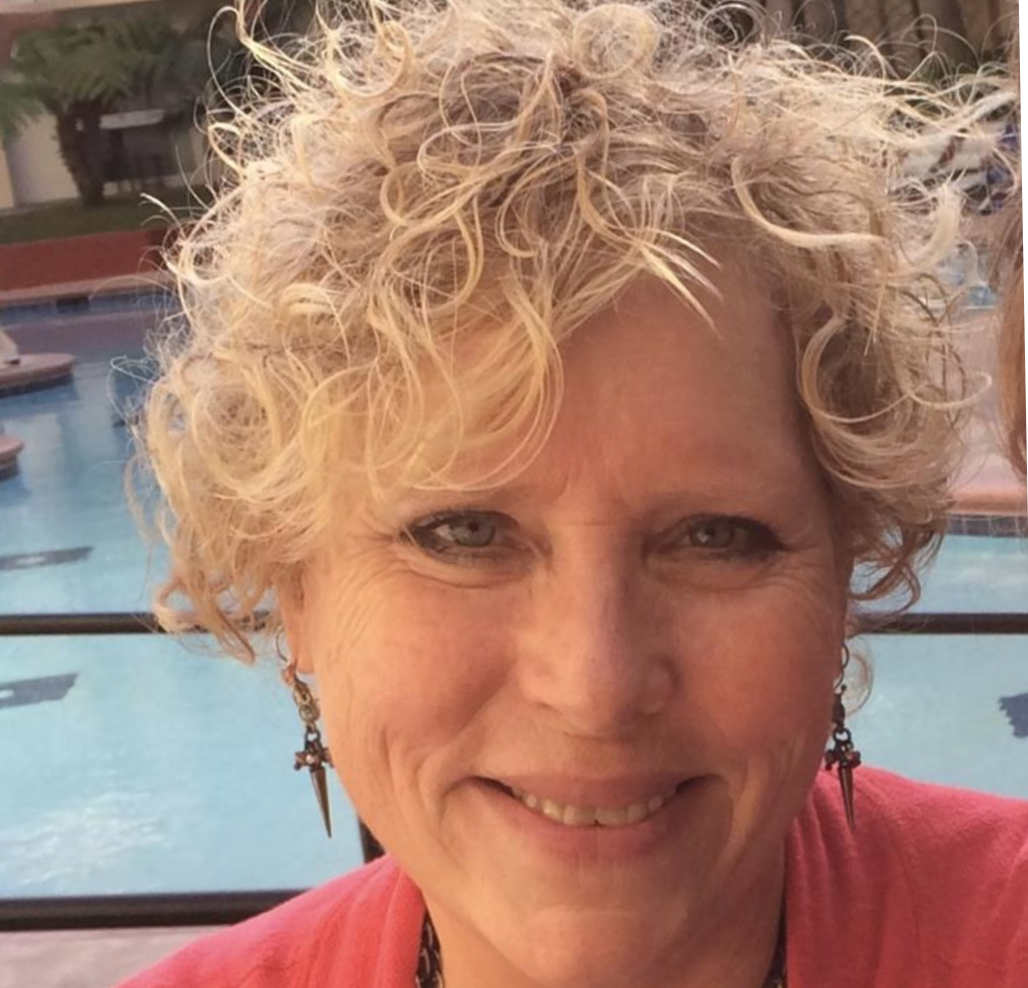
Mary Carlson, ITR-CTRT
Co-Owner and Chief Experience Officer
Mary Carlson is a 3rd generation filmmaker by trade and worked in the movie business for many years before she was introduced to Drs. Tinnin and Gantt. Mary had the heart to heal. "Healing through films was a passion of mine."
When Mary learned what Dr. Lou and Linda were doing with ITR, the fast healing success it had, and that Dr. Tinnin believed you did not need to be a therapist to do ITR, she quickly suggested a "do it yourself" app, (which they agreed wholeheartedly on) and committed to help them make ITR accessible to the world. Her goal ever since, was to train therapists, paraprofessionals, foster parents and trauma survivors in using ITR.
As Drs. Tinnin and Gantt always say, 'There is no reason in the world why anyone should suffer from even a minimal trauma symptom. Trauma is easy to treat and it doesn't take long to do it."
For those always asking, here are some of the pictures from Mary's past life that hang in behind her chair in the office.
She is now excited to work with the celebrities and heroes healing trauma!
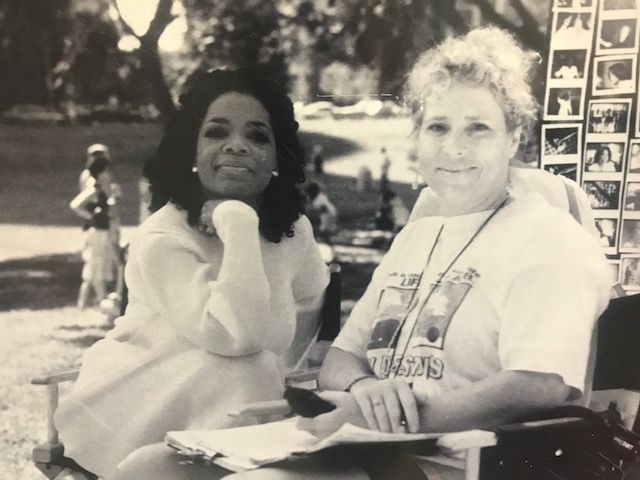
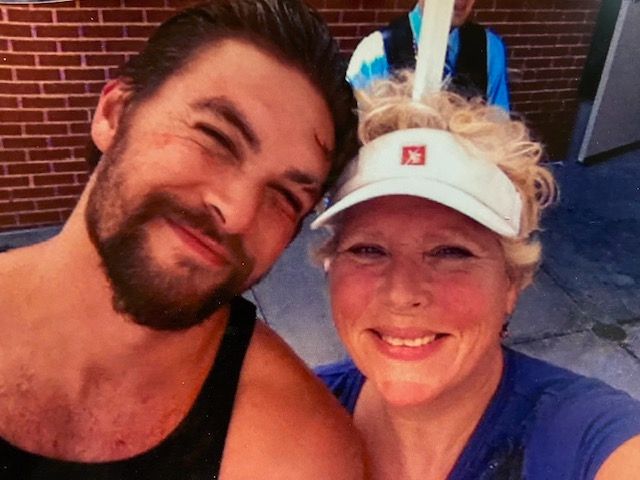



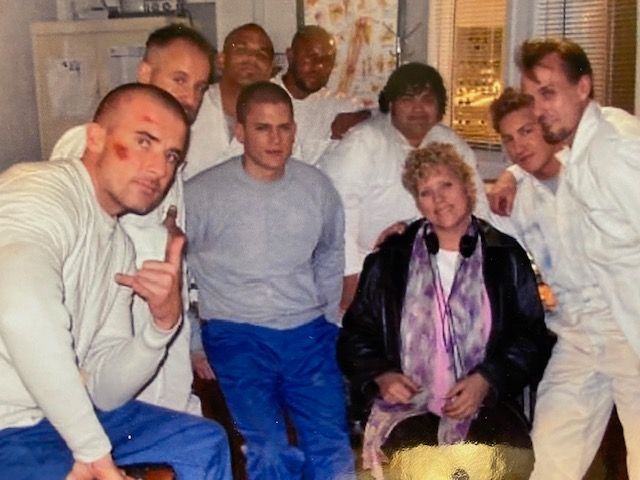




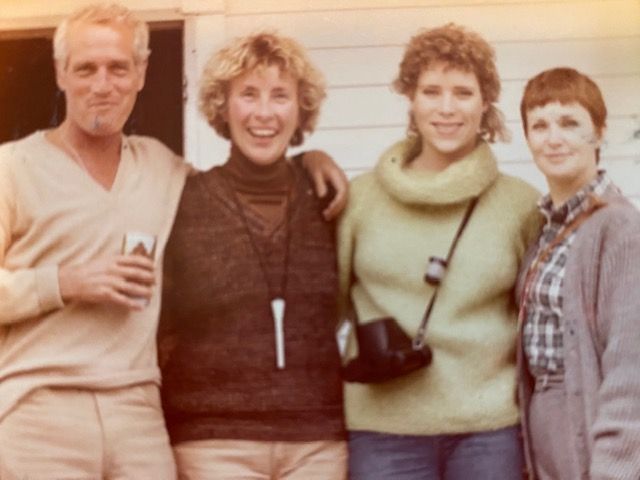




Instinctual Trauma Response®
Discuss training with us today. Call 800-214-0403 or Click Below

